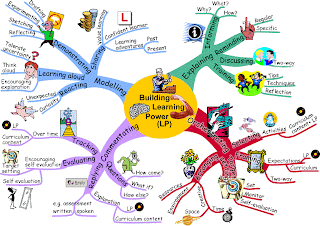As I was trawling through the readings and resources for
ECI831 week 3, that Alex Couros supplies to his students via the ECI831 wiki, I came across this
TED Talks video that gave me some inspiration and ideas for an up and coming presentation that I need to deliver to the
TAFE Queensland State business teaching and learning network on October the 14th 2010. The theme of this yearly conference for business teachers is technology and education. I am trying to develop a presentation that is both interactive and thought provoking so this video seemed worth a look. What was interesting was the storytelling the metaphors and the images provided as part of the presentation that kept me engaged and some of the terms and analogies used as part of this talk.
But let me digress.... In the Queensland VET sector there are teaching and learning networks of teachers, assessors and managers across the 13
Queensland TAFE Institutes. These networks are aligned across the vocational teaching areas and have been set up to encourage collaboration and sharing of resources, learning design and promote effective and innovative delivery of vocational education. These networks are managed by specific TAFE Queensland institutes who have responsibility and minimal funding to coordinate meetings and encourage collaboration and promote the sharing of issues relevant to a particular vocational area. Great Idea... but do they work as well as they could? My assessment is not yet. My premise is that sharing and collaborating is not a high priority for busy teachers and managers of these TAFE Queensland Institutes.
In 2007 as part of my Masters in Learning Innovation, I wrote a paper which was published in a
Queensland University publication. The paper was entitled " The F.A.C.T.S TAFE Qld Lead institutes and professional development. The paper focused on the need for VET educators to experience technology enhanced professional development if they were to enhance client service and product delivery. So in preparation for this up and coming 2010 presentation I have gone back to this paper, to see if things have changed over the last three years, particularly focused on technology and education options for VET educators to see if their is a spark that will give my presentation some synergy with where teachers in this teaching and learning network might be at now and what might have changed since 2007 and when I made these suggestions!
What has really occurred in the three years since I wrote this paper... NOT MUCH!
But what can be analysed within the Business Teaching and learning network and what can I present to challenge reinvigorate and revitalise possibilities? The TED Talks video above provided some key words that need to be incorporated and considered as I develop this presentation. These words were kindness, trust, rekindling, reconnecting and reframing, but what is really needed are the stories of how this has occurred within this network and why it is worth exploring in 2011 and beyond. The WIFM, what's in it for me.
I also really like this image that was provided as part of a Nancy White presentation, and I need to find some more images to clearly articulate the key words to be used in this presentation.
I have linked the presentation here but not happy about how it translates here on slideshare.
This post will be added to over the coming week as the structure for this presentation and further research ideas develop...... stay tuned.










































